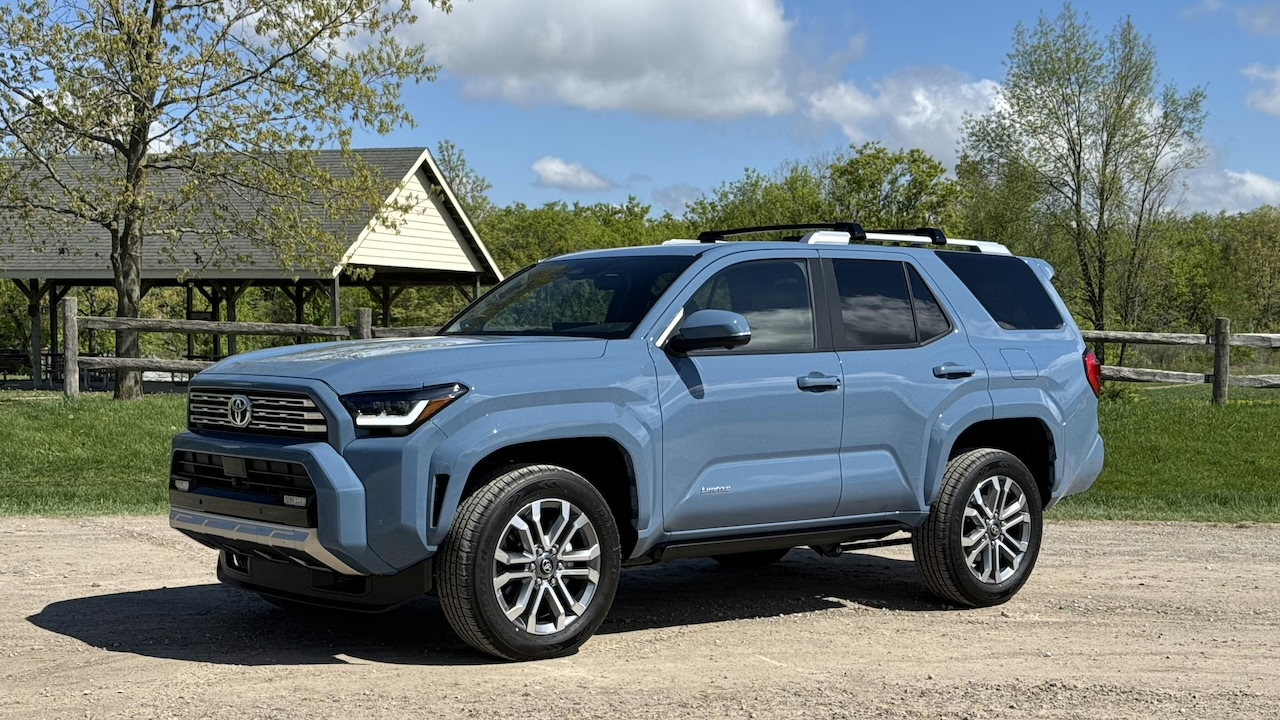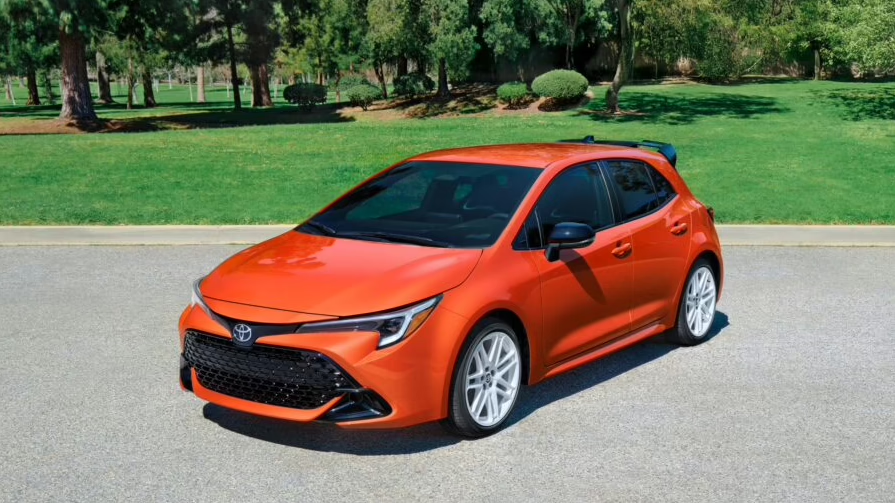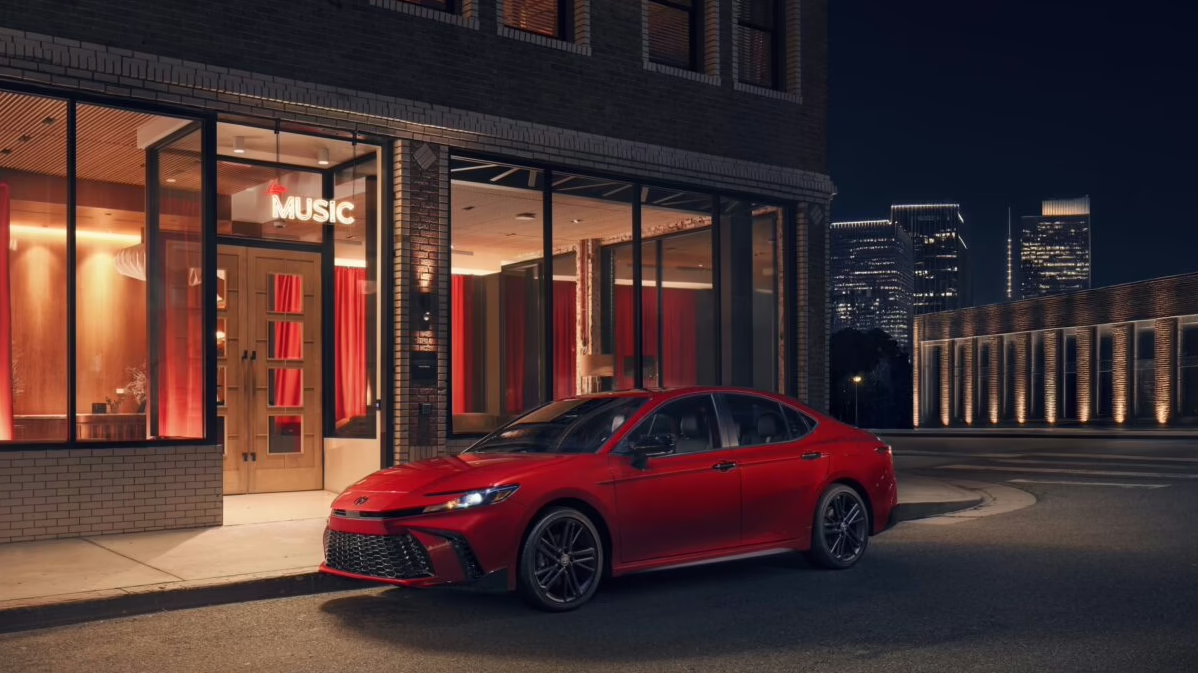The 2025 Toyota 4Runner starts its sixth generation with a mountain of change to the design, powertrain, and interior. But does it maintain its long-held rep?
| What’s Good: Great new design, looks new, yet still looks like a 4Runner. Big leap forward with eight-speed instead of five-speed transmission. Linear power delivery. | What Could Improve: Even the road friendly versions of the 4Runner lean toward off-road suspension tune. Cost quickly escalate from the reasonable base price. | My Conclusion: Stays true to 4Runner values. Feels like a classic SUV down the road. But enough changed that old-school enthusiasts will need time to adjust. |
OVERVIEW
After months of delay, we finally see the new, sixth-generation, 2025 Toyota 4Runner parked on dealer lots. The outgoing model stayed with us for 15 years. As a result, this incoming SUV brings a whole of new with it. The new platform carries a revolutionary design, a completely different set of powertrain choices, and a much more modern interior.
Moreover, Toyota now offers nine trims of 4Runner, starting with the base SR5, then on to the TRD Sport, TRD Sport Premium, TRD Off-Road, TRD Off-Road Premium, Limited, Platinum, TRD Pro, and—finally—the Trailhunter. It’s a wide range in capability, priority, and price. That’s a lot of change.
However, with its over 40 years on U.S. soil, the 4Runner developed a reputation that quite a few people like. Change what people like at your own peril, in many cases. Will 4Runner fans accept how Toyota changed the body-on-frame SUV? In other words, is it still 4Runner enough?

Four Cylinders Only
Toyota put the 4.0-liter V-6 out to pasture. The old-school, naturally aspirated V-6 no longer powers any North American Toyota. In the 4Runner’s case, a turbocharged 2.4-liter inline-four-cylinder replaced it. And it brought a healthy bump in torque along for the ride. Up eight horsepower, it churns out 278 at its peak, compared to 270 from the V.6. But Torque jumps by 39 lb.-ft, courtesy of turbo grunt, now churning out 317 lb.-ft.
That’s the base motor. Toyota named it i-Force. If you choose i-Force Max, you get the same engine with added help from an electric motor fed by a battery pack. The engine and motor work together to up peak outputs to 326 horsepower (48 HP more) and 465 lb.-ft of torque (148 lb.-ft more). Even better, courtesy of its hybrid-ness, you don’t pay a fuel economy penalty. In fact, city MPG improves.
Regardless of what lies under the 4Runner hood, an eight-speed automatic transmission bolts up to it. That leaps ahead of the five-speed automatic used in the 4.0-liter V-6. And it certainly helps fuel economy numbers as well. Whereas the old 4Runner managed but 16/19/17 MPG city/highway/combined. The new set up ranges between 19-23/24-26/21-23 MPG city/highway/ combined, depending on engine and drivetrain choice.
Fortunately, Toyota tuned the turbocharged motor well. You don’t feel much of any turbo lag with heavy throttle applies. And power builds linearly with engine revs, no weird surges either. Not to mention the quick shifts of the eight-speed, which also offers a good ratio range for both quick take-offs and low engine speed cruising. But I would take an even shorter first gear if offered.

Drivetrain
While four of the nine trims come standard with rear-wheel-drive (RWD), Toyota offers every trim of 4Runner with either part- or full-time four-wheel-drive (4WD). When optional, Toyota charges an additional $2000 for it. If you get 4WD, you also get a two-speed transfer case for Four-High and Four-Low.
Full-time 4WD comes standard in the Limited trim when you also decided on the hybrid, as well as the Platinum, which includes the hybrid. The rest of the line-up uses the part-time 4WD system. And the off-road friendly ones, the TRD Off-Road, TRD Off-Road Premium, TRD Pro, and Trailhunter, get that drivetrain as standard equipment.
I did not leave pavement in my drive of the 4Runner, but I did play with the system a bit and it worked smoothly. Toyota makes it easy to change between different drivetrain modes, though moving to four-low does first require shifting to neutral. It feels a worthy system of 4Runner off-road capability, so far at least.
Drivetrain choices by trim
SR5: RWD or part-time 4WD
TRD Sport: RWD or part-time 4WD
TRD Off-Road: part-time 4WD std.
TRD Sport Premium: RWD or part-time 4WD
TRD Off-Road Premium: part-time 4WD std.
Limited: RWD or full-time 4WD
Limited i-Force Max: full-time 4WD std.
Platinum: full-time 4WD std.
TRD Pro: part-time 4WD std.
Trailhunter: part-time 4WD std.

Chassis
Crucially, Toyota maintained the 4Runner’s body-on-frame credibility. It’s built on the TNGA-F platform, which also carries the Tundra, Tacoma, Sequoia, and Land Cruiser. You get a double-wishbone front-suspension and a solid-rear axle. But multiple joints locate the rear, making it a well-controlled solid-rear-axle.
Stiffer and more solid feeling than before, the 4Runner still very much feels built for off-road activity, even if you get a more on-road friendly version. My Limited trim test SUV included 20-in wheels and adjustable shock absorbers that Toyota calls Adaptive Variable Suspension. Even with that kit—even in the sportiest setting—you feel lots of body roll with any swift steering inputs and lots of suspension travel.
That tells you two things. First, the 4Runner maintains lots of suspension travel. Second, travel over paved corners patiently. On the plus side, it handles bumps in the road with zero trouble.
Toyota offers three levels of off-road kit from there, the TRD Off-Road and Off-Road Premium makes uses of Bilstein shocks. The Trailhunter uses Old Man Emu, OME shocks. And the TRD Pro gets adjustable Fox Shocks. The latter is also taller and wider. All three roll on 33-in, Toyo All-Terrain tires.

Inside
Inside feels the most like any other modern Toyota. A seven-inch partially digital instrument cluster and eight-inch center display take space in the base SR5 4Runner. But as you escalate up the line-up, those quickly move aside for larger screens. The TRD Sport swaps in a 12.3-in, fully digital instrument cluster, while the TRD Sport Premium adds a 14.0-in center display to the mix. Either setup connects to your smartphone wirelessly via Apple CarPlay and Android Auto however.
From there, you Toyota adds more and more luxury. My Limited test SUV included heated and ventilated front seats. A heated steering wheel, wireless smartphone charger, and a power moonroof. Going Platinum takes that even further with leather upholstery on the seats, heated second row seats, a head-up display, and more. All very posh.
A neat trick, some 4Runners also get a JBL Flex speaker, or a removable Bluetooth speaker to take with you and keep listening after you leave the SUV. That’s a nice, convenient touch. And, of course, all 4Runner’s get the power rear glass window. A must.
On the road, I found the seats comfortable and supportive. The second row offered enough headroom for my 5’11’’ inch frame and still left plenty of space behind me for over 40 cubic feet of cargo. Fold the second row and it jumps to over 80 cubic feet.

Conclusion
Starting price for a rear-wheel-drive, Toyota 4Runner SR5 is $42,220. That includes the $1450 destination charge. Prices quickly climb from there. My test SUV cost nearly $63K, given that Toyota installed about $3000 worth of options like $1005 automatic power running boards, and the $1330 third-row of seats in addition to several low cost items.
While Toyota managed to keep the base price reasonable, the 4Runner definitely changed. It’s no longer a simple machine with simple mechanics. Rather, it succumbed to the modern push of hybrid tech, advanced mechanics, and screens galore.
But, critically, the philosophy of what makes an SUV “a 4Runner” remained. In it, you get a tall, boxy, soft-riding plaything of a vehicle. It’s still 4Runner enough for me.

Competitors
Chevrolet Traverse Z71
Ford Explorer
Honda Passport Trailsport
Specifications
2025 Toyota 4Runner: 5-door, 5-7-seat, SUV
Base price: $42,220 (includes $1450 destination charge)
Price as Tested (Limited w/4WD): $62,875
Powertrain: i-Force: Turbocharged 2.4-liter I-4
Peak Power: 278 horsepower at 6000 rpm
Peak Torque: 317 lb.-ft at 1700 rpm
Transmission: eight-speed automatic transmission
Drive: rear- or four-wheel-drive
Powertrain: i-Force Max: Turbocharged 2.4-liter I-4 Hybrid
Total System Peak Power: 326 horsepower at 6000 rpm
Total System Engine Peak Torque: 465 lb.-ft at 1700 rpm
Transmission: eight-speed automatic transmission
Drive: rear- or four-wheel-drive
Fuel Economy in MPG and range
19-23 MPG city
24-26 MPG highway
21-23 MPG combined
Total Driving range: NA miles
Dimensions
Length: 194.9 inches
Width: 77.9 inches, 79.9 inches (TRD Pro, Trailhunter)
Height: 72.6-74.0 inches
Wheelbase: 112.2 inches
Weights and Capacities
Curb weight: 4455 – 5500 lbs.
Interior volume: NA cu ft
Cargo volume (behind 3rd/2nd/1st rows): 12/43-48/83-90 cu ft
Calculated weight to power (lbs./HP): 17.5:1
Mfr’s claimed 0-60 mph: 7.1 seconds
Mfr’s claimed Top Speed: NA mph
Government standard sport utility vehicle 2WD and 4WD
Options: Third-row seating, $1330; automatic power running boards, $1005; roof rail cross bars gloss black, $420; tow tech package, $400; Tailgate LED light, $200; accessory ready LED lantern, $160; cargo cover, $135; cargo mat (carpet), $130; air filter TRD, $90; wheels locks, $90; towing ball mount, $65



